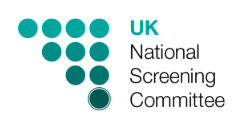Child vision screening (opt out consent): information for teachers
Published 24 October 2017
Applies to England
This information is for teachers in local authorities using opt in consent for child vision screening in schools. It will help you to answer question from children or parents about child vision screening.
Aims of screening
The aim of child vision screening is to detect significantly reduced vision. Young children rarely complain about having reduced vision. If only one eye is affected it is even less likely to be noticed by the child, parents, carers or teachers.
The tests are carried out within school by trained vision screeners. Parents or carers are informed that the test will be taking place.
Vision screening in this local authority uses opt-out consent. This means that parents or carers only need to respond to the screening invitation if they do not want their child to receive screening. If their child has vision screening, the parents or carers will receive a letter with the result.
The screening test
We will test the children in a quiet room within the school. Each eye will be tested separately, by covering the other eye with a patch or glasses with one lens blanked out. We will then ask the child to either name or match letters on a card held 3 metres away. Children do not need to know their letters to complete the screening.
Testing a child typically takes no longer than 10 minutes.
Possible results
The test will show if reduced vision is suggested or not.
If reduced vision is suggested, children will be referred for further tests. These could be carried out by a local optician, by someone in a children’s community eye service or within the hospital eye service.
If a child is absent on day of screening or will not co-operate the screening test, they will be tested on another occasion where possible. If they are still unable to be tested they will be referred for diagnostic testing. If necessary, parents will be contacted by letter to make an appointment for an eye test at their local optician. This includes children who were absent on 2 occasions and missed screening.
If reduced vision is not suggested, we will write to the parents or carers to inform them of the outcome. This letter will also highlight that like all screening tests, vision screening is not 100% perfect but should find most problems. A child’s vision will change over time and vision screening may not pick up less common eye problems.

